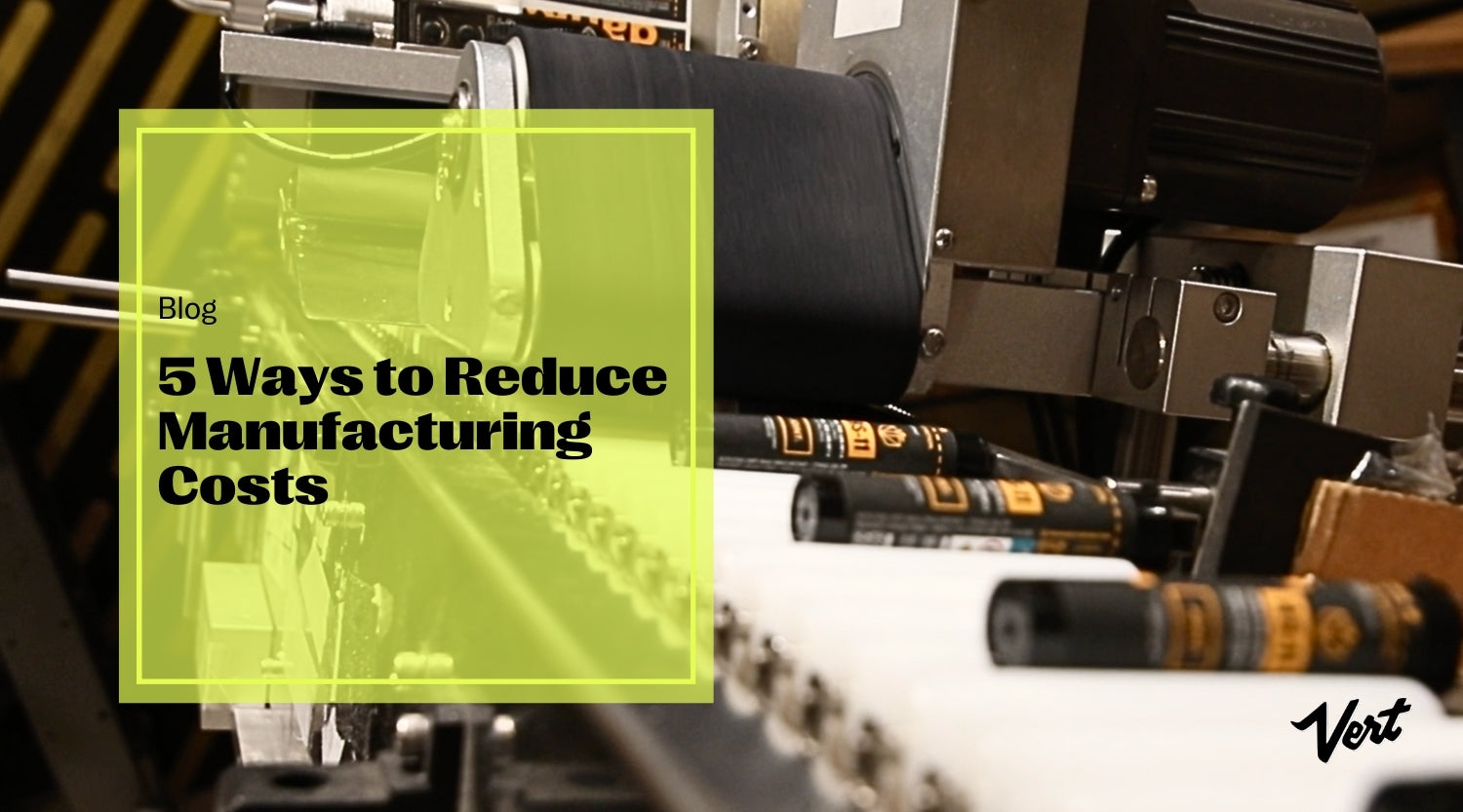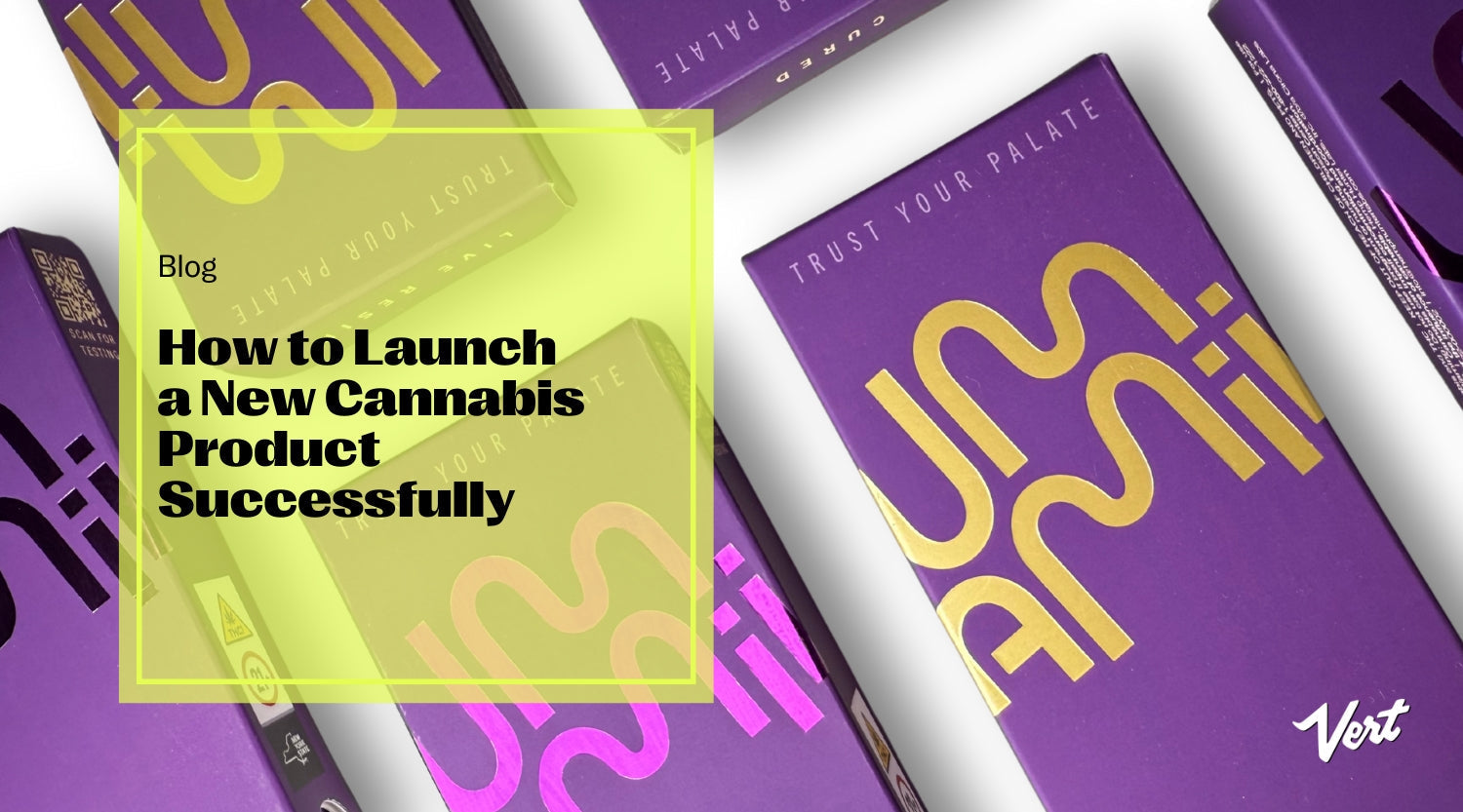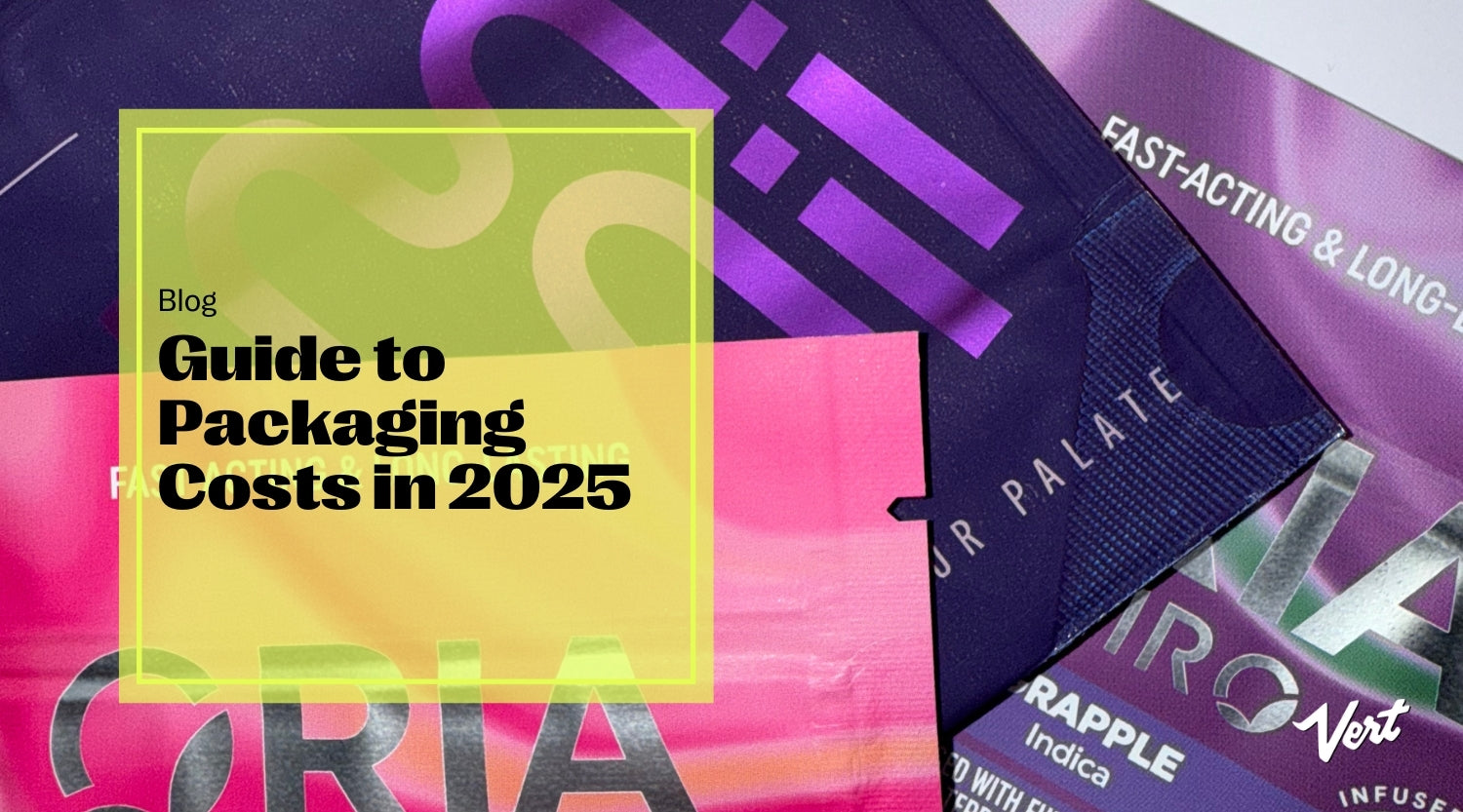Reducing manufacturing costs without sacrificing quality is key to building a successful cannabis brand. Implementing thoughtful manufacturing cost reduction strategies will boost your bottom line, allowing you to reinvest in growth.

The partnerships you form along the supply chain will either create or reduce waste. Wise choices regarding suppliers, packaging, and logistics will ensure you can put as much back into your business as possible.
1. Look for Flexible and Scalable Solutions
Scalable solutions allow you to maximize margins by avoiding high minimum order quantities (MOQs), inefficient buying practices, and excessive inventory tie-ups. Your vendors can help you reduce the cost of goods with agile solutions such as:
- Flexible minimum order quantities: Businesses that tie up their cash flow in excessive MOQs are less able to react quickly when market opportunities or setbacks occur. Suppliers with no MOQ allow you to balance inventory and cost without sacrificing quality or speed to market.
- On-demand supply: On-demand suppliers integrate directly into your supply chain to provide you with the supplies you need, when you need them.
- Diversified operations: A cannabis packaging company that offers domestic and offshore solutions protects you against supply chain bottlenecks when one supplier region is affected by festivities, conflict, or natural disasters.
- One-stop shops: One-stop suppliers offer a comprehensive single-source solution. For example, a one-stop packaging vendor will take care of everything from wholesale boxes, jars, and tubes to premium print embellishments, saving you time chasing up multiple vendors.

2. Prioritize Compliance
Cannabis brands must comply with state and federal packaging regulations. Non-compliance can lead to fines and/or products being taken off the shelves. This will blow out your costs, eat into your profits, and lead to additional losses due to spoilage while you get your packaging up to standard.

Delays in getting your product onto the shelves are potentially devastating for cannabis businesses where freshness is everything. You can only optimize your manufacturing costs if you get the product to the customer in a timely fashion.
The legal stakes are high in the cannabis industry. Choose your laboratory and packaging supplier carefully and ensure they have a proven track record of keeping other brands compliant in a changing regulatory landscape. For example, your packaging supplier must be an expert in child-resistant cannabis packaging, color restrictions, and tamper-evident seals.
3. Invest in Cutting-Edge Software
Cutting-edge software will lower manufacturing costs by streamlining routine processes. It's natural to want to keep your startup costs low as a new business. However, this isn't necessarily the right way forward for businesses in the competitive cannabis industry.
For example, AI-powered software can be used to automatically track metrics like the input and output of each of your products, monitor for compliance, and improve inventory management. This initial investment will invariably pay off as you reduce labor costs and optimize processes at every stage of production.
4. Optimize Your Facility’s Design for Flow
Rethinking the design of your facility for “flow” is a great way to optimize efficiency. Take a good look at the layout of your factory and see if you can reduce the distances materials have to travel from one step to the next. Remember, the physical layout of your facility should reflect your operating procedures as closely as possible.
Research into the arrangement of departments and workstations in a facility found that productivity rose by 7% with reduced material handling distances (page 6 of the PDF). Even minor tweaks to your facility’s layout could lead to significant savings over the long term.
5. Automate Wherever Possible
The cannabis industry as a whole remains very hands-on despite continuing advances in automated processes. It's worth analyzing each step of the manufacturing process to identify areas that will benefit from automation. For instance, some cannabis businesses are investing in tools that automate harvesting and processing or use automatic watering systems to cut down on labor costs.

It’s important to optimize quality and accuracy when automating. While automation cuts out the potential for human error, it introduces the potential for machine error and “cookie-cutter” results. Brands that pride themselves on their premium products will also need to decide if automating certain processes aligns with their core values and branding.
Understanding Manufacturing Costs
There are specific kinds of expenses involved in the manufacturing process. A deep understanding of the process your product goes through before it ends up on the shelf will help you identify where you're spending too much.
Manufacturing a product involves direct and indirect expenses as well as fixed and variable costs. Keeping control of the variable costs in the production process is key to making significant savings.
Direct Costs
Your direct costs are what you spend on manufacturing each product from start to finish. They include:
- Raw materials, such as cannabis flower and concentrates
- Other ingredients used in products like topicals or salves
- Packaging materials and design
- Production employee wages and benefits
- Energy used to grow cannabis plants
- Batch testing for quality control
Indirect Costs
Indirect costs—or manufacturing overhead costs—are vital to the production process but aren’t directly tied to producing individual units or batches of cannabis. Rather, they’re necessary to keep the manufacturing facility fully operative.
Indirect costs for a cannabis company include:
- Rent, utilities, and maintenance
- Equipment costs including lease or purchase, maintenance, and repairs
- Labor costs for tasks like administration and security
- Manufacturing supplies like personal protective equipment (PPE)
- Regulatory compliance costs
Fixed vs Variable Prices in Cannabis Manufacturing
Production costs can be either fixed or variable. Fixed manufacturing costs remain fairly constant regardless of the level of production output. These are typically time-related expenses or costs associated with maintaining the capacity to produce.
Examples of fixed costs for a cannabis business include rent or mortgage payments for the cultivation or processing facility, equipment purchase or lease (like extraction machines or grow lights), insurance premiums on the facility and equipment, salaries of permanent staff (such as master growers or facility managers), and base utility costs necessary to keep the facility operational, even at minimal production levels.
Variable manufacturing costs fluctuate directly with the quantity of cannabis products being produced. As production increases, these costs will rise proportionally.
Key examples include:
- The cost of raw materials (cannabis seeds, nutrients, growing media, solvents for extraction, packaging materials)
- Direct labor costs (wages for trimmers, harvesters, and processing technicians directly involved in handling the product)
- Variable utility costs (electricity for grow lights that increase with plant growth, water usage based on cultivation scale), and testing and compliance costs that are incurred per batch or unit produced
Minimize the Cost of Production to Maximize Profit
Manufacturing costs affect your competitiveness in a crowded market. A careful analysis of your processes, technology, and partnerships should uncover opportunities to reduce costs and improve your profit margins.
Agile vendors play a vital role in improving efficiency for a successful cannabis business. Implementing lean manufacturing principles like a good “flow” of materials through your facility also reduces unnecessary spending on labor and transport. Finally, the strategic use of software and automation will reduce your labor costs without compromising on product quality and customer experience.




Leave a comment
This site is protected by hCaptcha and the hCaptcha Privacy Policy and Terms of Service apply.